Search
Summary
Loading AI-generated summary based on World History Encyclopedia articles ...
Answers are generated by Perplexity AI drawing on articles from World History Encyclopedia. Please remember that artificial intelligence can make mistakes. For more detailed information, please read the source articles
Search Results
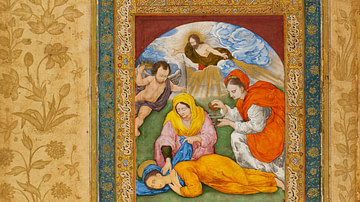
Image
The Martyrdom of Saint Cecilia
The Life of Christ was commissioned by the third Mughal Emperor Akbar (1540-1605) to be translated into Persian. This was part of a larger effort to encourage inter-religious understanding and cooperation. The Martyrdom of Saint Cecilia...
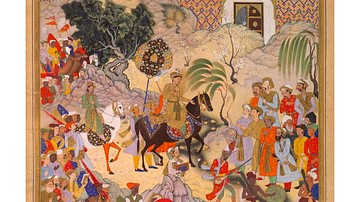
Image
Folio from Akbarnama
The third Mughal Emperor Akbar's (1542-1605) triumphant entry into the city of Surat. A detached folio from a copy of the Akbarnama - the book of Akbar which chronicles his life and reign. Opaque watercolour and gold on paper, by Farrukh...
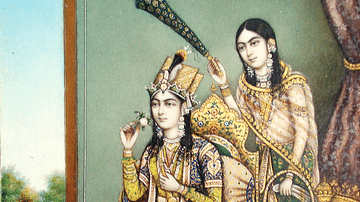
Article
Royal Women in the Mughal Empire
It was not only the Mughal emperors that left an indelible mark in the history of the Indian subcontinent but also the queens and princesses. The latter's contributions to art, architecture, literature, cuisine, refinement, and administrative...
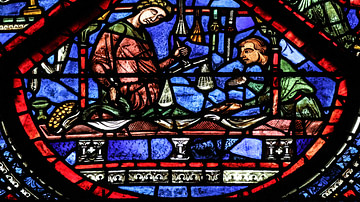
Article
Eyes on the East: Chronicles of the Indian Ocean Spice Trade
As the 15th century ended, Europeans were still mostly in the dark about the Eastern world. Early travelers like Marco Polo had given the West tidbits of information, but these accounts were too highly colored and fragmentary to provide a...
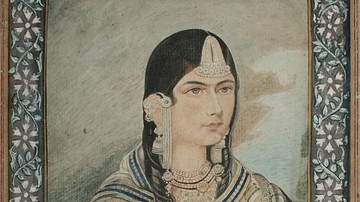
Image
Hamida Banu Begum
Hamida Banu Begum (c. 1527 to 29 August 1604), wife of Mughal Emperor Humayun, mother of Emperor Akbar, miniature painting, opaque watercolor or gouache on paper, Lucknow School of painting, c. late 19th century.
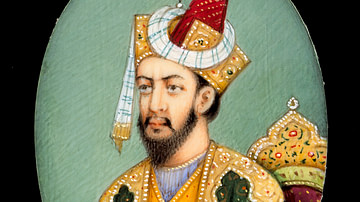
Image
Emperor Humayun
Mughal Emperor Humayun (r. 1530-1540/1555-1556), son of Emperor Babur, father of Emperor Akbar, miniature painting, opaque watercolor and gold on ivory, India, Delhi, c. 1875.
Los Angeles County Museum of Art
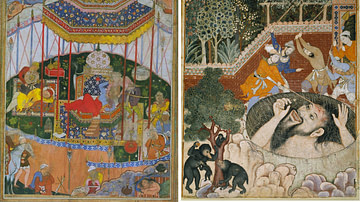
Image
Folios from the Hamzama
Left to right: The Hamzanama is one of the most famous illustrated manuscripts of Mughal painting. It depicts stories from the life of Hamza ibn Abdul-Muttalib (c. 569–625) who was the uncle of the Islamic prophet Muhammad. The book was commissioned...
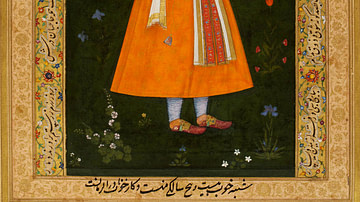
Image
The Emperor Shah Jahan as a Prince
The third Mughal Emperor Akbar's (1540-1605) grandson Shah Jahan (1592-1666) as a young prince. He would become the fifth Mughal Emperor and hold the title of Shah Jahan the Magnificient. Opaque watercolour and gold on paper, by Abu'l Hasan...
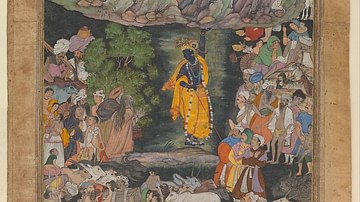
Image
Krishna Holds Up Mount Govardhan
The Harivamsa or book of Hari (Krishna) was one of several sacred epics commssioned by the Mughal Emperor Akbar (1540-1605). This folio shows the god Krishna holding up Mount Govardhan to protect the villagers of Braj from the rains sent...
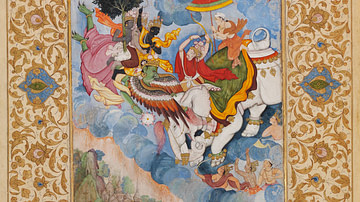
Image
Folio from the Harivamsa
The third Mughal Emperor Akbar (1540-1605) sought to quell tensions between the Hindu and Muslim communities of Hindustan. Seeking to engender religious harmony and tolerance, he commissioned the translation of major Sanskrit texts into Persian...